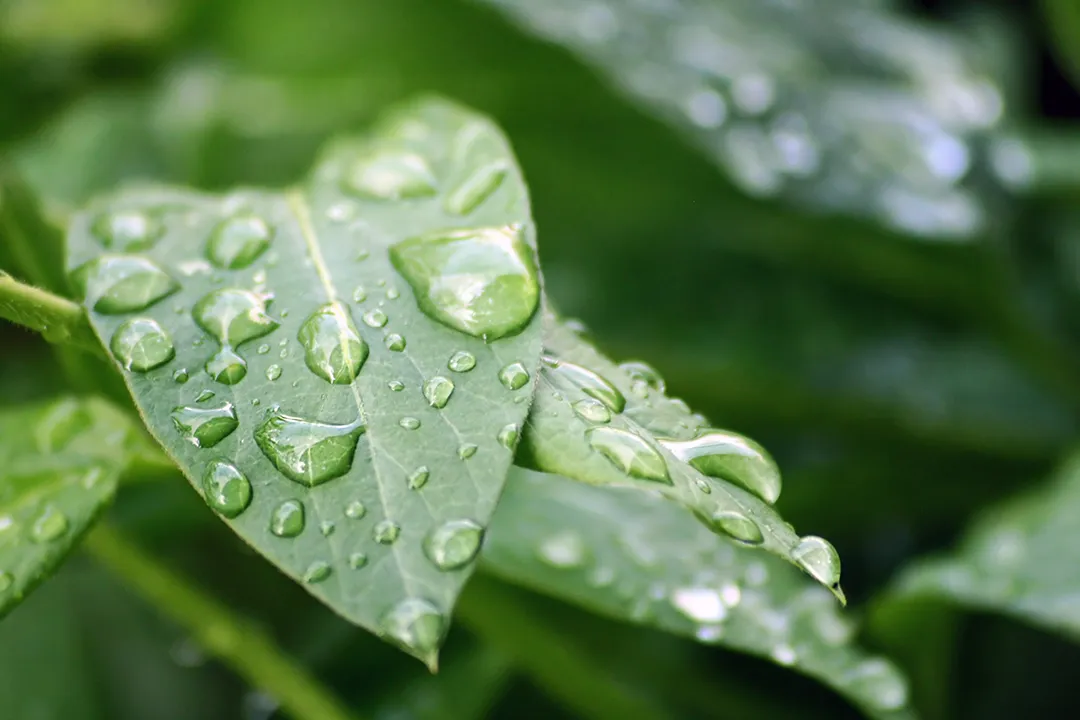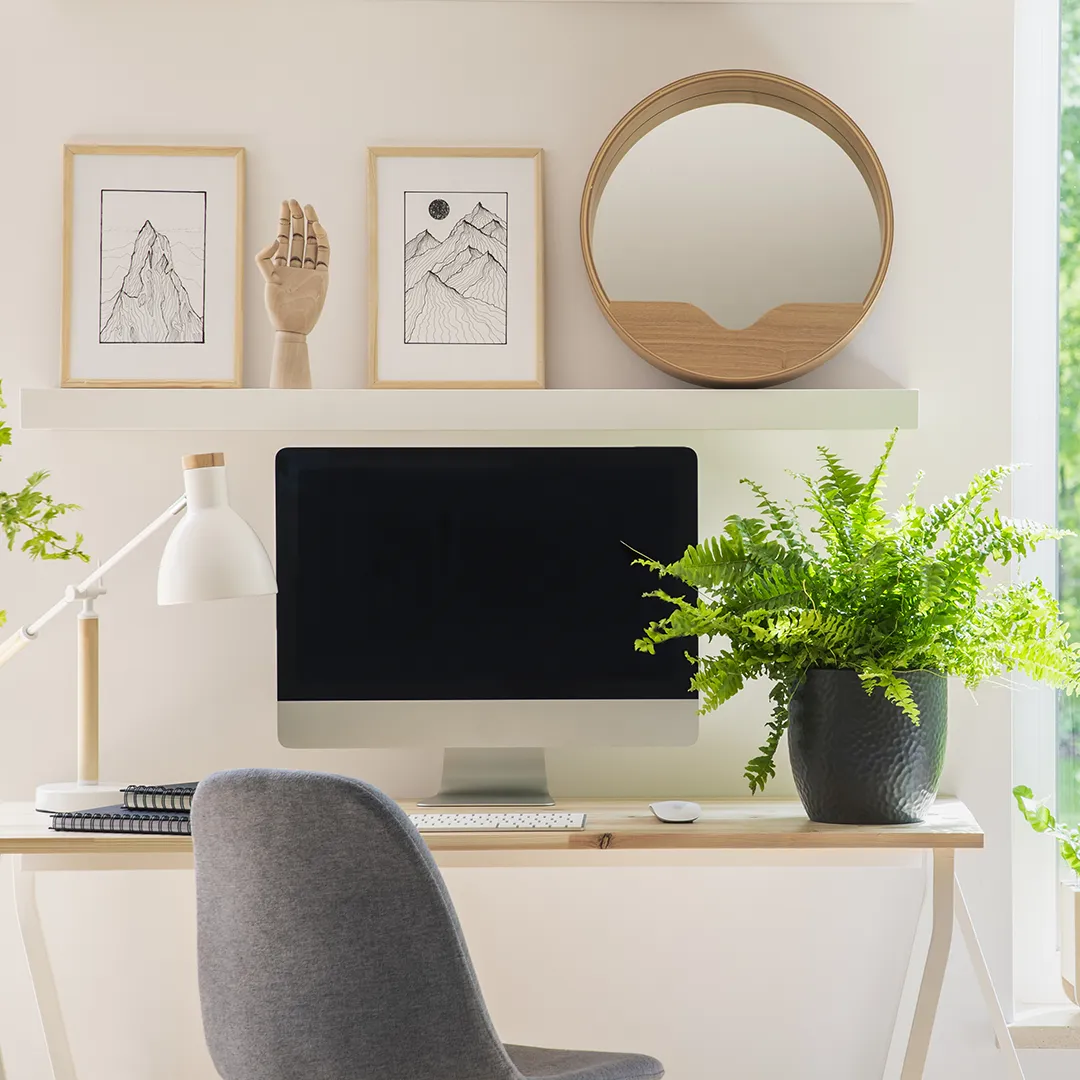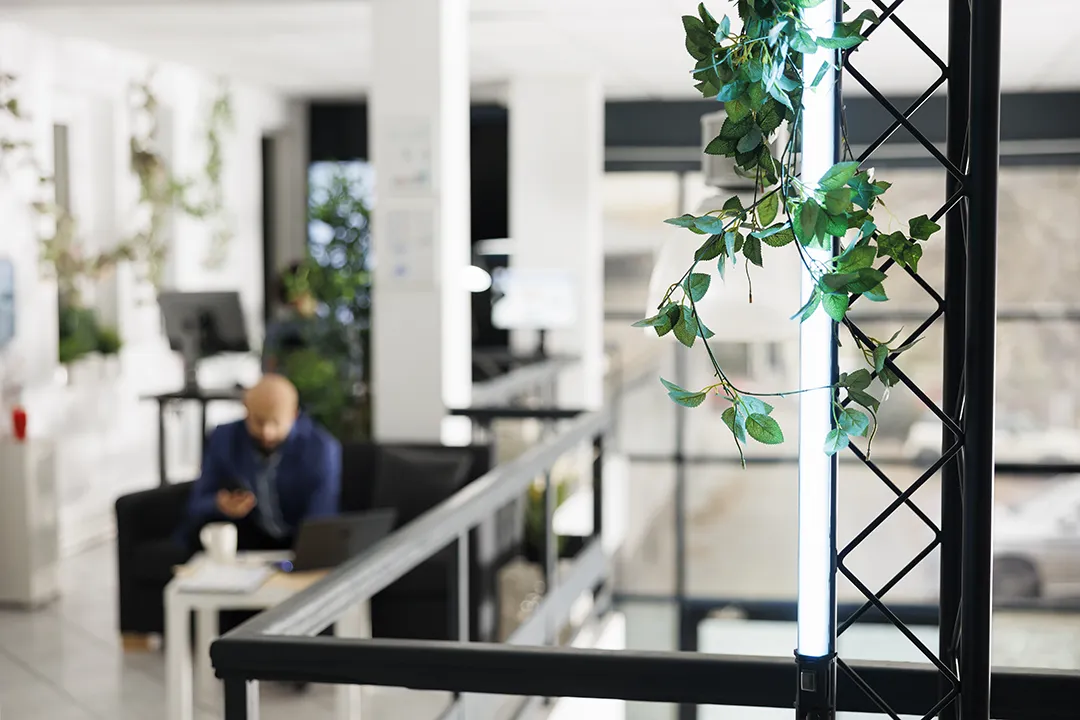
Understanding how your plants work is key to effective plant care. Whether you’re managing a lush indoor garden or maintaining office plants, the science behind their needs is fascinating. Caring for plants doesn’t require a green thumb—just a better understanding of light, water, and photosynthesis. Let’s dive in!
The role of photosynthesis in plant care
Plants are autotrophs, which means they create their own food through photosynthesis. This process requires three essential elements: light, water, and air. Here’s how it works:
1. Light as energy
Plants use a green pigment called chlorophyll to absorb light energy from the sun or artificial sources. This energy is converted into glucose and stored in cells called chloroplasts. Light acts as the “food” that fuels a plant’s growth and vitality.
2. Air for breathing
Plants “breathe” by absorbing carbon dioxide (CO₂) and releasing oxygen (O₂). They use carbon dioxide to break down glucose, turning it into usable energy. This exchange is crucial for both plants and humans, as plants provide the oxygen we need to survive.
3. Water for nutrients and support
Water plays multiple roles in photosynthesis and overall plant health. It:
- Delivers essential nutrients like nitrogen, phosphorus, and potassium.
- Keeps leaves healthy and open for better absorption of light and carbon dioxide.
- Provides structural support to cells, preventing plants from drooping.
When light, water, and air are in balance, plants can flourish and grow.

Understanding light and water needs for indoor plants
Plants have adapted to their native environments, which is why their light and water needs vary. Here are two examples:
- Low-Light Plants: Ferns naturally grow on forest floors where sunlight is limited. They’ve adapted to thrive in shaded conditions, making them perfect for indoor spaces with low light.
- Direct-Light Plants: Succulents originate from desert environments and are accustomed to intense, direct sunlight and infrequent watering.
Understanding a plant’s native habitat can help you provide the right care at home or in your office.
Signs your plant needs more light or water
Plants will show warning signs when they’re not getting enough light or water. Here’s what to look for:
Signs your plant needs more light
- Sparse or Leggy Growth: Long stems with fewer leaves indicate the plant is stretching to find light.
- Leaning Toward Light: The plant tilts toward its light source. Rotate it regularly for even growth.
- Small Leaves or No New Growth: Without enough light, plants can’t produce the energy they need to grow.
Signs your plant needs more water
- Dry Soil: Check the soil—if it’s completely dry, it’s time to water.
- Light Pot: A pot that feels light may mean there’s no moisture in the soil.
- Drooping Leaves: Plants rely on water for cell structure; drooping leaves often signal dehydration.
For plants with brown or crunchy leaf edges, consider using a humidifier to add moisture to the air.
Signs your plant needs less light or water
While insufficient light or water can harm your plants, too much of either can be just as damaging. Here’s how to identify when your plant is getting too much light or water:
Signs Your Plant Needs Less Light
- Scorched or Burnt Leaves: Brown or yellow patches on leaves may indicate sunburn, especially in plants that prefer indirect light.
- Curling or Drooping Leaves: Excessive light can stress plants, causing leaves to curl inward or droop.
- Faded Leaf Color: Leaves losing their vibrant green color can mean the light is too intense.
Signs Your Plant Needs Less Water
- Yellowing Leaves: Overwatering often leads to leaves turning yellow and soft.
- Moldy or Mushy Soil: Persistently wet soil can cause mold growth and root rot.
- Fungus Gnats: These pests thrive in overly damp soil, signaling that you’re watering too often.
If you notice these signs, adjust your plant’s environment by reducing light exposure or watering frequency. Always check soil moisture before watering and consider moving plants away from intense light sources if needed.

Let us help you keep your plants healthy
If you’re still not sure how to care for your plants, we’re here to help. At Plant Solutions, we specialize in plant health and maintenance for homes, offices, and plant walls. Learn more about our horticultural services at Plant Solutions.
With a little knowledge about light, water, and air, you can create the perfect environment for your plants to thrive!
